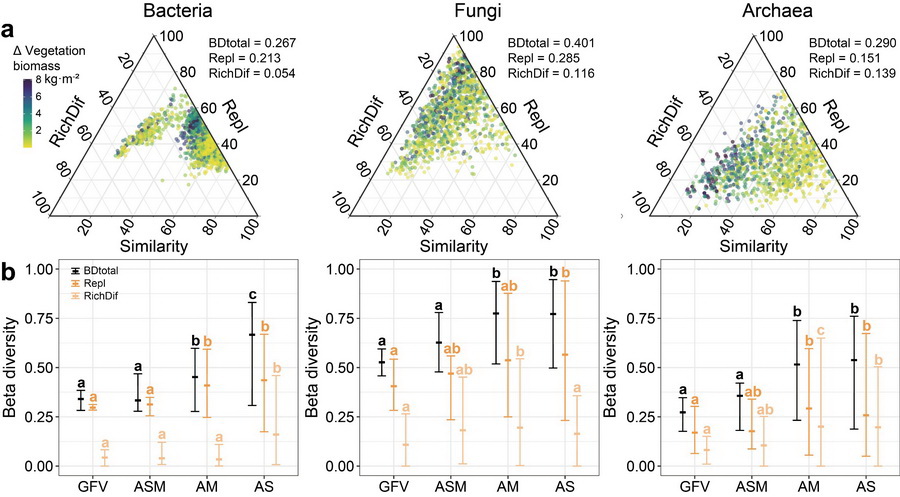Vegetation Biomass Affects Soil Microbial Distribution and Assembly in Alpine Permafrost Regions
Updatetime:2022-05-07From:
【Enlarge】【Reduce】
Soil microbes are the most active bio-participants in vegetation changes and play essential roles in maintaining and improving soil quality, plant productivity and ecosystem stability.
It is generally accepted that alpine grasslands on the Qinghai-Tibet Plateau (QTP) exhibit reverse succession from alpine swamp meadow (ASM), alpine meadow (AM) to alpine steppe (AS) after permafrost degradation under climate warming. However, knowledge about soil microbial communities of such reverse succession in the QTP permafrost region is limited.
A research team from the Northwest Institute of Eco-Environmental and Resources of the Chinese Academy of Sciences conducted a study at the long-term observation site of alpine ecosystems in the permafrost region of the Shule River headwater on the northeastern margin of the QTP.
They found that vegetation biomass was a good indicator for reverse vegetation succession (from ASM, AM to AS) and decreased significantly.
The study was published in Science of The Total Environment.
Microbial distribution patterns (diversity and composition) and assembly processes (determinacy or stochasticity) in communities are key parameters that influence ecosystem processes and functions.
"A deeper understanding of microbial communities in vegetation change can establish the link between microbes and vegetation variation and inform vegetation-microbe feedback models," said Prof. CHEN Shengyun, corresponding author of the study.
In this study, the researchers found that microbial β-diversity was dominated by species replacement and community assembly by stochastic processes, both of which gradually increased with decreased vegetation biomass.
Reverse vegetation succession strengthened the link between microbial communities and environmental factors and enhanced the sensitivity of microbial communities to environmental perturbations while reducing the ability of microbial communities to resist changes in their composition (resistance).
"In addition, soil microbial communities in glacier foreland vegetation were less sensitive to environmental change, more resistant, and might be the most stable one in alpine ecosystems," said WU Minghui, first author of the study.
This study may enhance the understanding of the occurrence and regulation in microbial diversity and help to predict the response dynamics of microbial communities to alpine ecosystem changes.

Decomposition of β-diversity of soil microbial communities and its differences in different vegetation types (Image by CHEN Shengyun)
Contact:
CHEN Shengyun
E-mail: sychen@lzb.ac.cn
Appendix




